Latest Releases
Each release of Causely includes new features, bug fixes, and performance improvements. This page provides highlights of the most recent releases.
Have ideas, questions, or feedback? Please reach out to us at community@causely.ai.
Overview
Each release of Causely includes new features, bug fixes, and performance improvements. This page provides highlights of the most recent releases.
To get details on older releases, please go to the changelog page, listing all releases.
November 12, 2025
Version v1.0.101MCP Server: Causely's Causal Reasoning Engine, Now in Your IDE
The new MCP Server gives you direct access to Causely's Causal Reasoning Engine (CRE) from any MCP-compatible IDE.
You can now pull the full causal context of an inferred cause to automatically generate a code fix and a pull request, without leaving your workflow. This capability is in Early Access; let us know if you'd like to try it in your environment.
Read the blog post announcing MCP Server for IDEs: Introducing Causely’s MCP Server.
Telemetry Integrations in the UI
You can now add and manage telemetry data sources directly in the Causely UI. The Integrations experience shows:
- The health of all configured sources
- The last discovery time and data retrieved
- Recommendations for which data sources to prioritize next
By expanding your telemetry coverage, Causely builds a more complete causal model of your system, improving precision in root cause inference and proactive detection.
Adding additional instrumentation enhances Causely's ability to model service-to-service communication and automatically detect reliability risks.
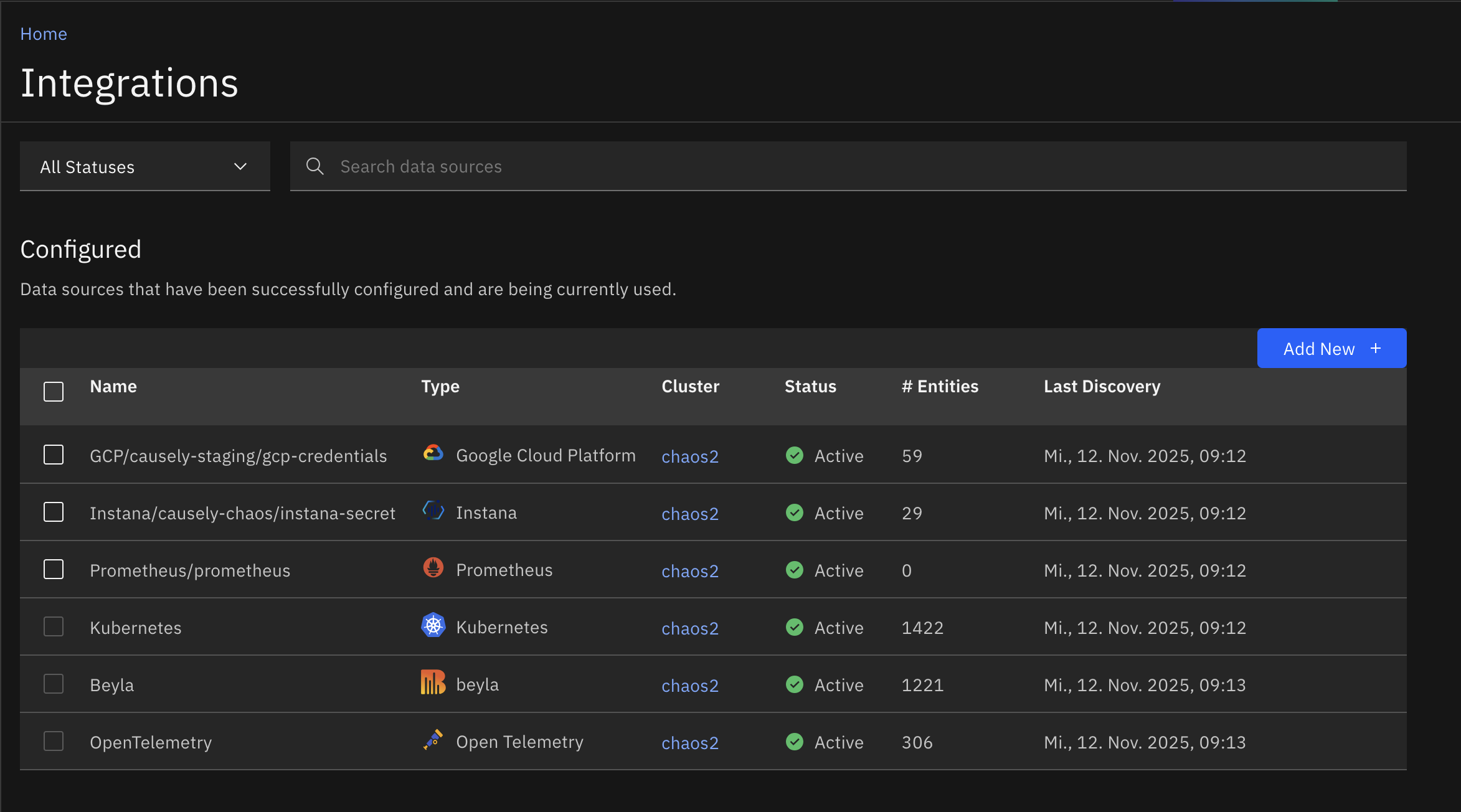

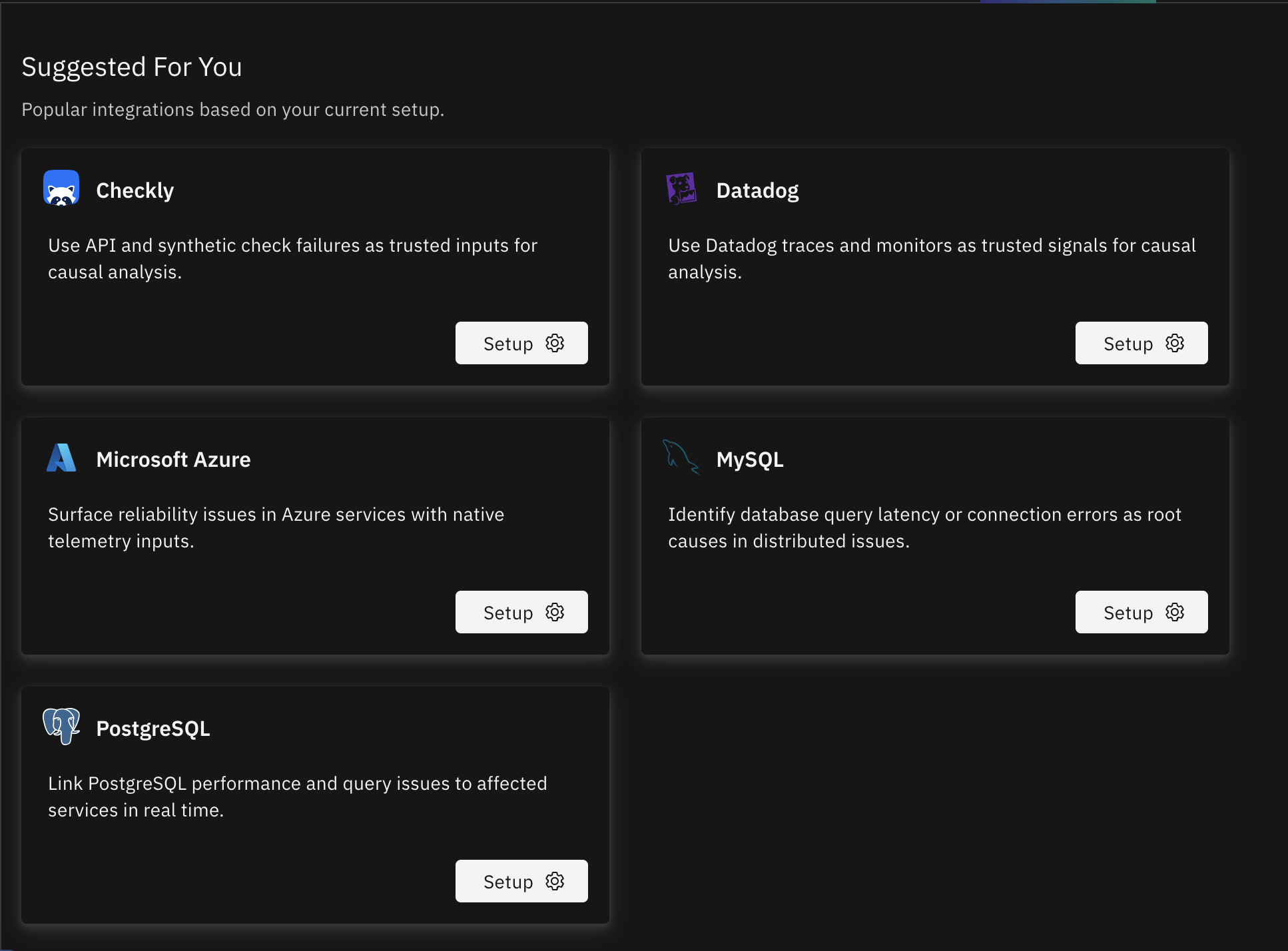
Background Operation Root Causes
Causely's causal model now includes background operations such as asynchronous message consumers (Kafka, RabbitMQ, and more).
This enables automatic inference of slow consumer root causes for message-driven workloads.
Expanded Elasticsearch Support
Causely now supports additional Elasticsearch indices, ensuring that the most relevant logs are linked to each inferred root cause — giving you the “why” behind degradations with more context and precision.
Did you know?
Not only can Causely leverage Grafana Alloy, Loki and Beyla as telemetry sources, but you can also use the Grafana Plugin to bring Causely's causal insights directly into your Grafana dashboards. Learn more in the docs.
Bug Fixes and Minor Improvements
- Automatically discover Docker services exposed on host IPs for more complete topology mapping
- Make OpenTelemetry sample rate configurable to maintain mediation health
- Show active scope and filter details in the Topology view
- Update service graph to display intermediate services along route destinations
October 30, 2025
Version v1.0.99Ask Causely: Logs and Events Access
When you ask about a service's health, Ask Causely now summarizes recent errors and warnings from container logs and relevant events. This gives you faster context on what changed and where to look next.
Uptime SLO Added
Beyond response error rate and latency SLOs, uptime SLOs are now automatically configured for every discovered service. Causely continuously learns baseline thresholds for request durations. You can customize SLOs and thresholds per service or deprioritize services you don't want to operate under an SLO.
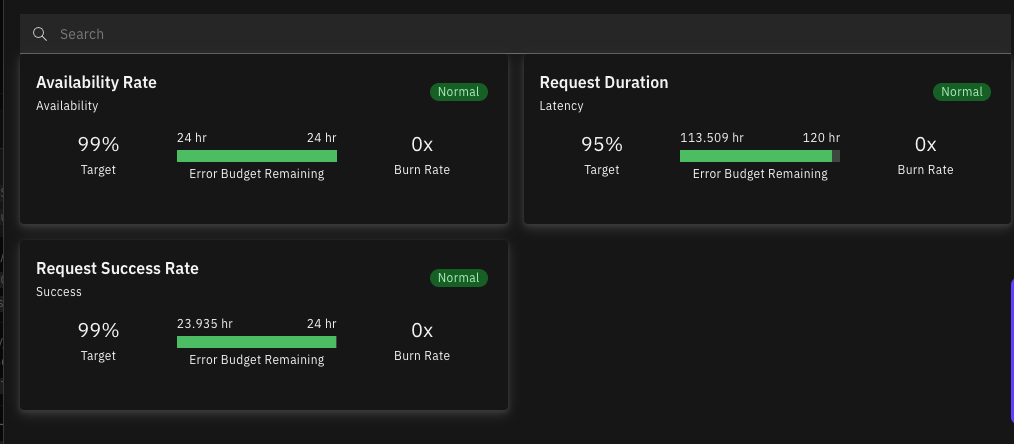
HTTP Path and RPC Method Mapping
You now have clear visibility into which services each HTTP path or RPC method belongs to. When latency or error rates spike on a specific endpoint, immediately identify the underlying service for faster remediation.
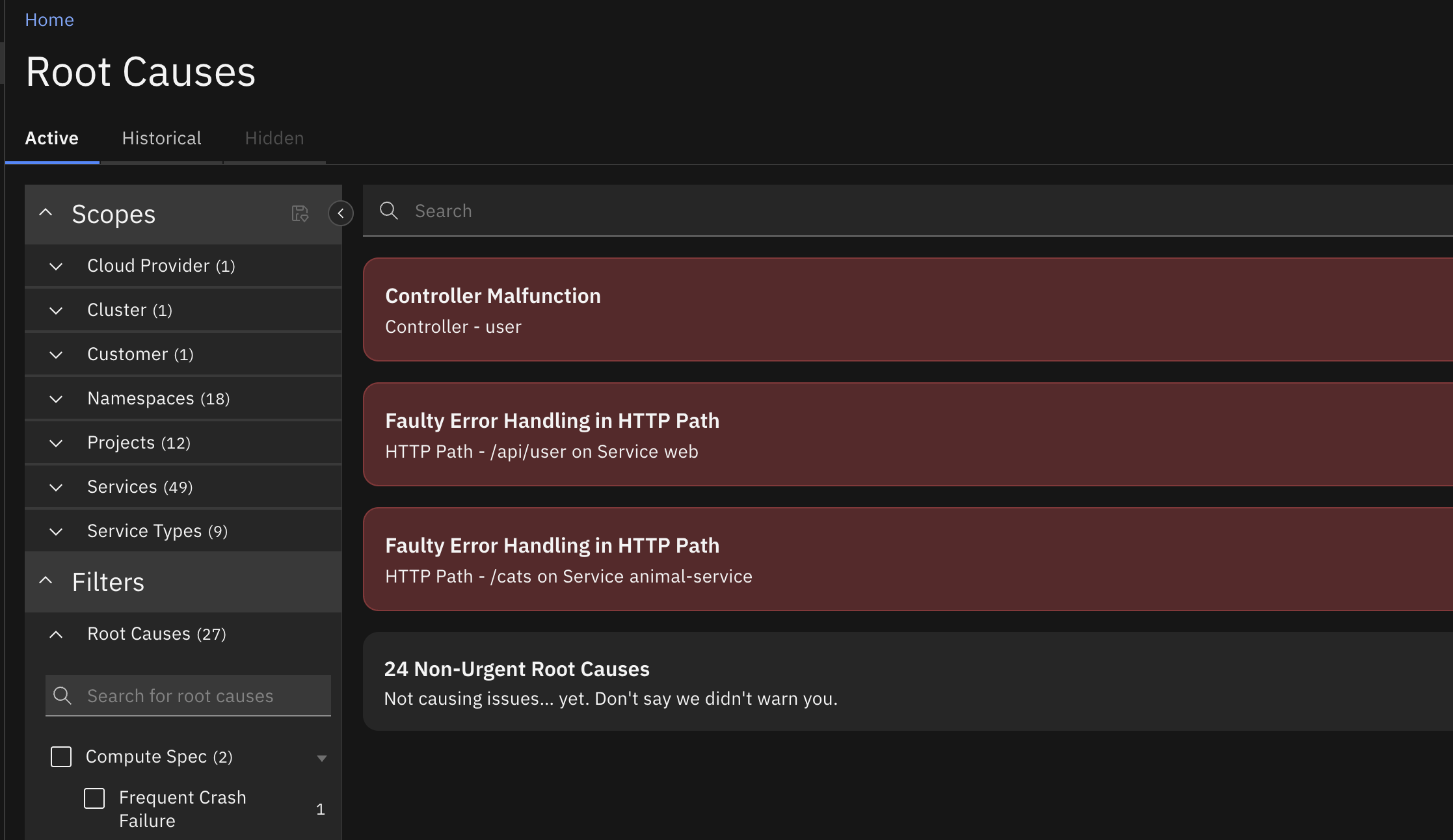
Historical Root Causes Filter
Filter historical root causes by precise time windows to narrow your analysis and track behavior over specific periods.
Did you know?
We've partnered with Google Gemini to enhance Causely's AI SRE experience. Causely’s causal reasoning engine delivers deterministic diagnoses, while Gemini adds grounded summarization, entity recognition, and code generation to power Ask Causely and causal explanations/remediations. Read the blog: How Causely and Google Gemini Are Powering Autonomous Reliability.
Bug Fixes and Minor Improvements
- Updated Beyla agent to address incorrect service graph rendering in the Causely UI.
- Loki logs display fix: timestamps now correctly show the original date and time of each message.
October 13, 2025
Version v1.0.96Service Prioritization
Not all services are created equal. You can now set priorities for your services so notifications reflect what matters most. Assign strict SLOs to critical services and reduce noise from lower-priority ones, helping teams focus where impact is highest.
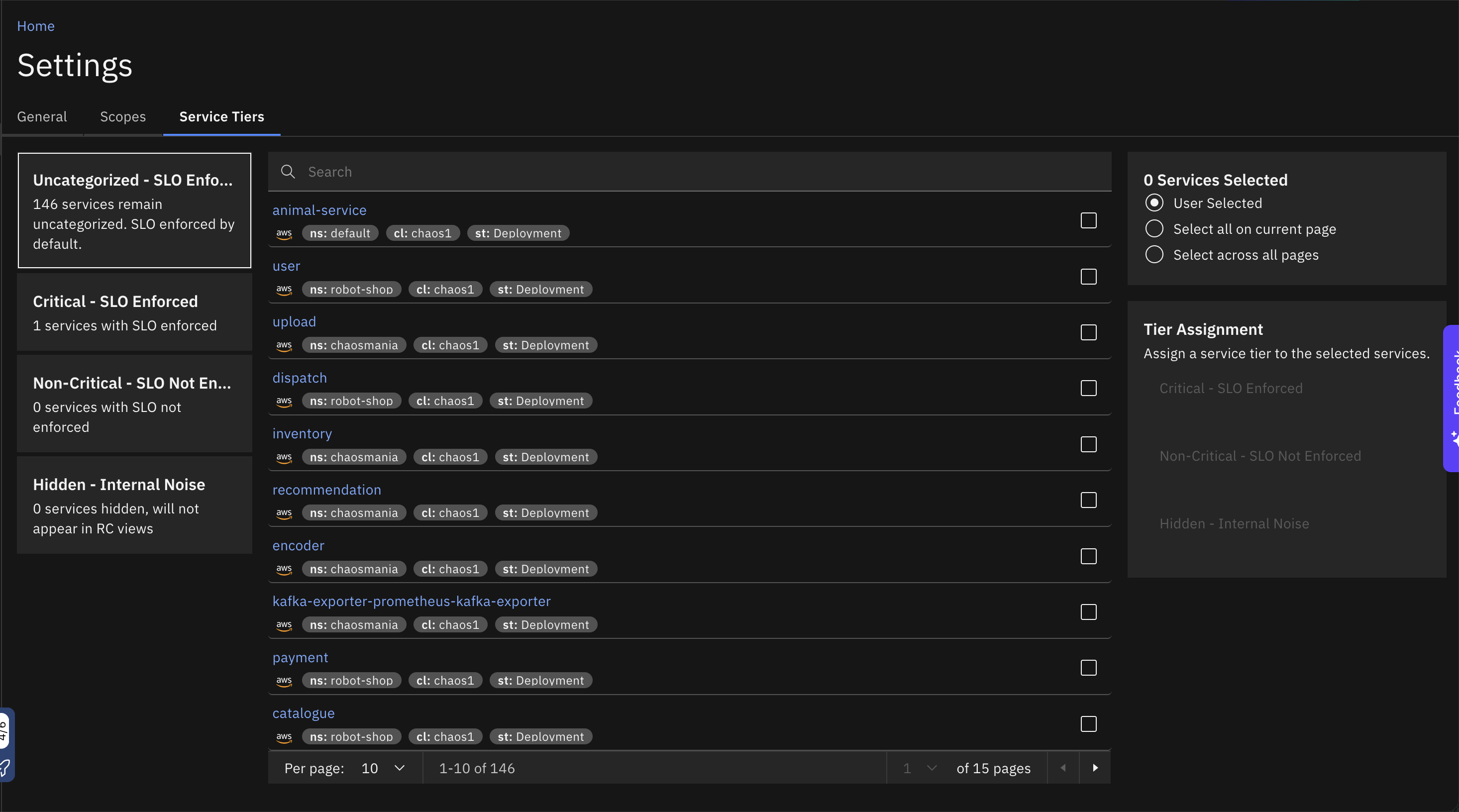
incident.io Integration
Causely integrates with incident.io to automate incident response. Causely analyzes alerts in real time, maps them onto live dependency graphs, and pinpoints the single root cause behind cascading failures; incident.io then routes the incident to the right team with full causal context, reducing triage time and accelerating recovery.
Elastic Log Ingestion
For customers sending logs directly to Elasticsearch, Causely can now ingest and analyze those logs. See log-based errors and contributing signals alongside metrics and traces in your causal graph.
Instana Integration
Causely now supports Instana for trace, metric, and data-flow ingestion. This enables teams using Instana to visualize dependencies, identify performance bottlenecks, and detect root causes directly within Causely.
Early Access: Enhanced Root Cause Descriptions and Remediations
We've introduced an LLM-powered preview that enhances root cause descriptions and recommended remediations. Causely synthesizes the most relevant context—symptoms, metrics, and logs—to produce clear, actionable explanations. We'd love your feedback as we refine this capability.
Did you know?
Causely has a feature-rich API, that allows you to programmatically access and integrate with Causely's causal engine. Learn more about the Causely API.
Bug Fixes and Minor Improvements
- Improved auto-mapping of Prometheus alerts defined for RabbitMQ
- Improved resource metric visualization for Nomad environments
- Improved Datadog integration to leverage OTel traces
- Improved handling of context in initial prompts and answer parsing for Ask Causely
More Releases
Go to the changelog page.